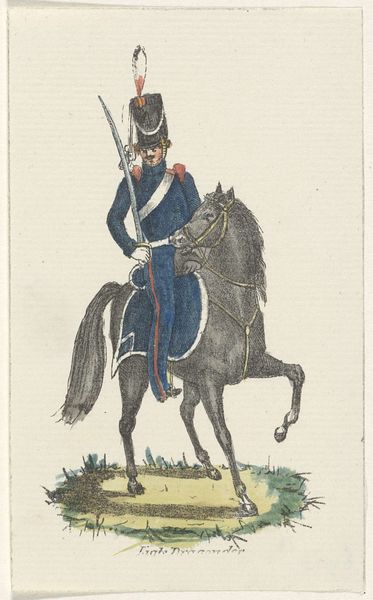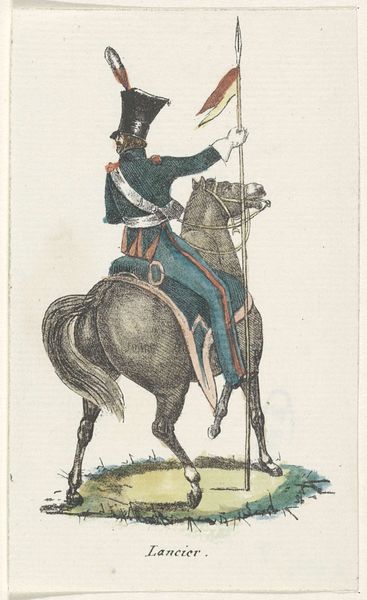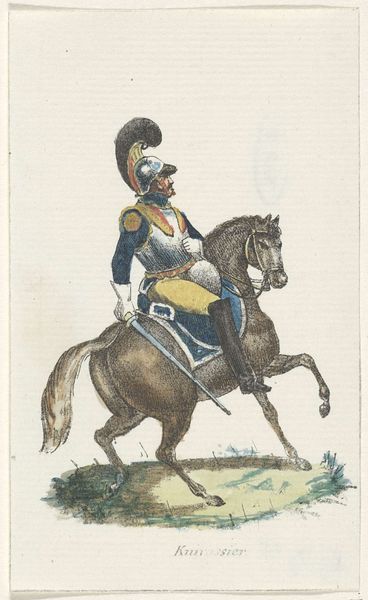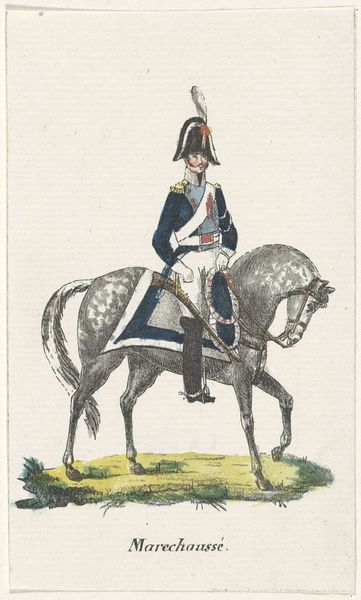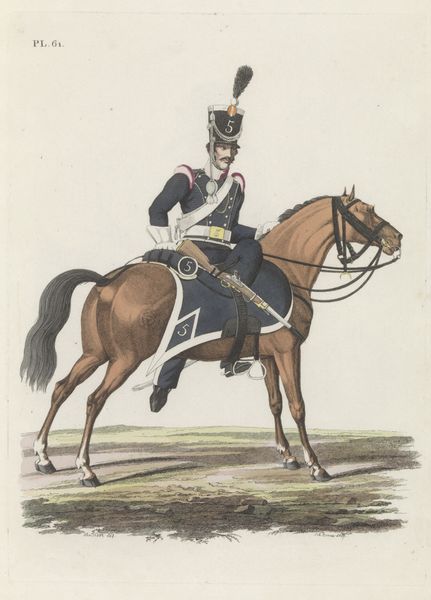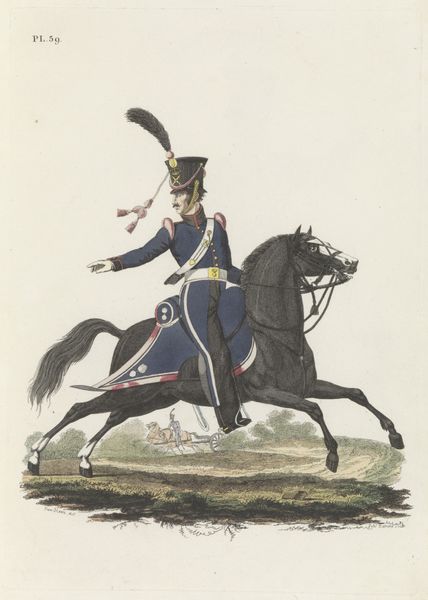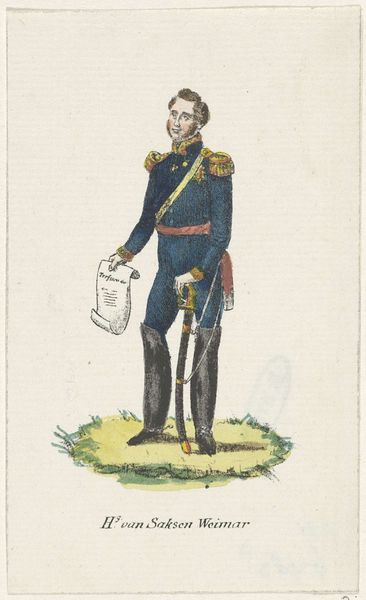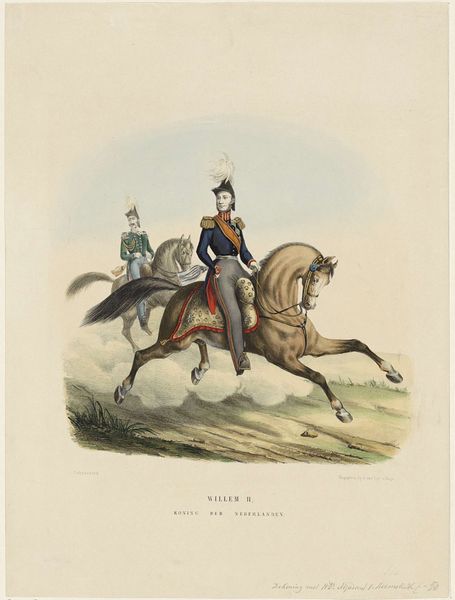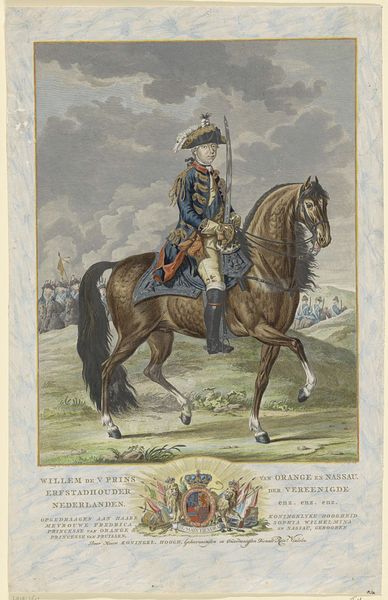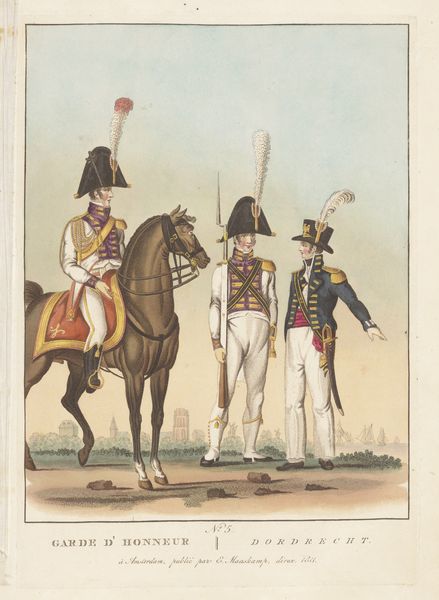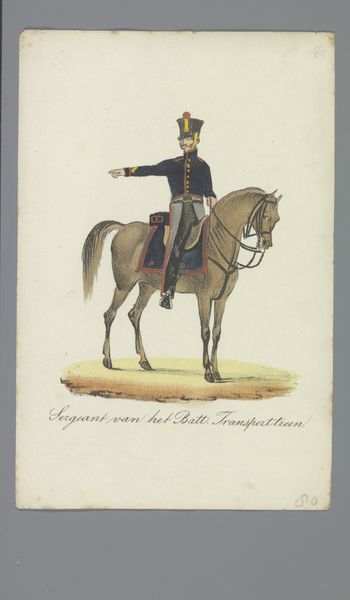
drawing, print, ink
#
portrait
#
drawing
# print
#
ink
#
romanticism
#
costume
#
sketchbook drawing
#
watercolour illustration
#
genre-painting
#
history-painting
Dimensions: height 113 mm, width 68 mm
Copyright: Rijks Museum: Open Domain
Editor: Here we have Willem Charles Magnenat’s "Rijdende Artillerie," made sometime between 1830 and 1835. It’s an ink drawing, almost print-like in its precision, portraying a soldier and his rearing horse. There's something stiff and formal about the way they're both posed. What do you make of this piece? Curator: I'm drawn to the ways this work documents the material realities of military life at the time. Consider the labour involved in producing such a detailed print – the artist's hand meticulously transferring the image, the production of the ink itself, the paper. How does the seemingly simple rendering of a soldier and his horse reflect the social and economic structures of its time? Editor: That's an interesting way to look at it, I was focused on it more as a history painting. Curator: Precisely, consider the uniform, the weaponry; each a product of industry, of specific manufacturing processes. What does the detail in rendering those elements suggest about their importance? Is it mere documentation, or does it imply a deeper commentary on the mechanization of warfare? Editor: So you’re saying it's not just *what* is depicted but *how* it's depicted? And how that process reflects broader manufacturing and labour trends? Curator: Exactly! Look closely at the horse’s bridle, the buttons on the uniform; their meticulous rendering highlights the very real, tangible nature of military equipment. This elevates the status of what we might consider craft or labour, to a central theme. Editor: I see, thinking about the production process and the materials themselves opens up a whole new perspective, not just about military life, but the labor and means to produce it. Curator: It challenges our ideas of art being divorced from the day to day materials that define our world.
Comments
No comments
Be the first to comment and join the conversation on the ultimate creative platform.
